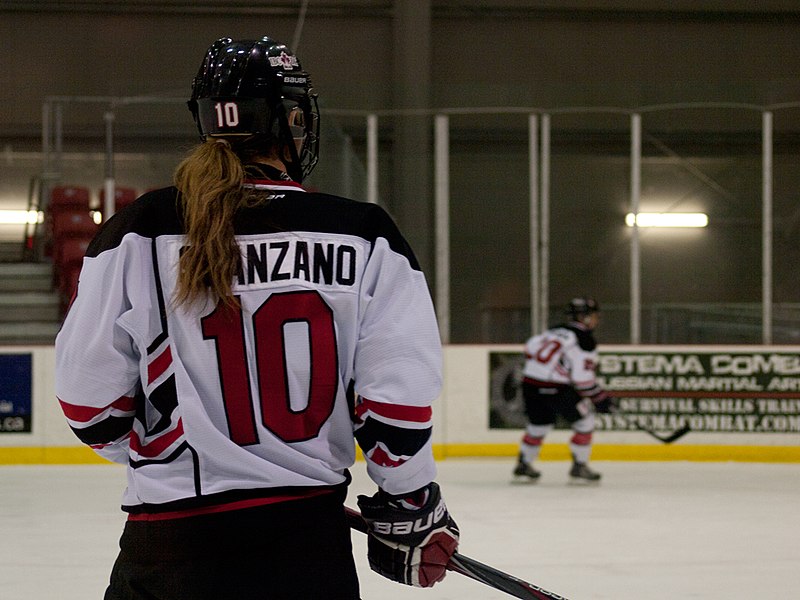This Morning in Sports: A Step Backward For Hockey

By: Max Wolpoff
Often when I write things for this site, I attempt to take a humorous look at sports as they are. This is a business where crazy things happen every day and the seriousness of contracts and money can be put aside to appreciate working in a toy factory. In sports business, teams rely on making everlasting memories and bonds with the community and world to stay afloat.
Today is not one of those days where I can look at the news in a positive light. This is a dark day and a step backward for the sport of hockey. The Canadian Women’s Hockey League (CWHL), for those of you living under a rock or willfully ignorant of women’s sports, announced Sunday morning that they would cease operations on May 1, 2019.
One week earlier, the Calgary Inferno completed their climb back to the top of the league by winning the Clarkson Cup over Les Canadiennes de Montreal. The game was broadcast on Sportsnet in Canada and NHL Network in the United States. Two years ago, the league announced expansion to China, salaries for players, and the overall health of women’s hockey seemed unquestionably good.
Jayna Hefford, the new commissioner at the start of the 2018-19 season, took over a successful enterprise and was holding positive talks with American rival leauge the National Women’s Hockey League (NWHL) about a possible merger.
I rode high as the play-by-play broadcaster for the Boston Blades in a year where they won one game, then did the same thing the next year, putting up with a 180-minute round trip train commute to Worcester and a winless team. Every day I was at the rink was a day better spent than any other place I could be. I based my law school personal essays on my work with the Blades. I worked for free because I loved my job.
The curtain came down on the league not because of lagging fan support, not because of low play quality, and not because it failed in its mission to inspire young girls to play hockey. The CWHL ended because all the good will and sympathy in the world cannot prop up a sports league forever. It failed because there was not enough money to justify continuing to operate.
Players all seemed to have the exact same reaction across social media: that they were dissapointed by the announcement, hopeful for the future, and understanding that it is hard to stay optimistic when your employer closes shop. The NWHL capitalized on the moment and released a statement confirming their sympathy for the closure of the league, but also re-affirming their next season will begin in October. Media voices weighed in across Hockey Twitter, as did fans, near unanimous in their support for the league and its now unemployed players and staff.
I am no longer under contract with this league and have fulfilled my work obligations for the season. There is no spokesperson telling me what to write or say. It is genuine when I tell you that reactions like those across the sports world about this news are exactly why the league folded.
Running a hockey league is an expensive operation and sponsorships help teams pay for everything from ice time and pucks to sticks and shoulder pads. That new skate sharpening machine is more expensive than front-row concert tickets to “insert big act here.” Travelling with hockey bags is one of the biggest pains in flight scheduling, especially to travel across the Pacific Ocean to China with all the stick tape and wax imaginable for a week of games. Without hard money support, not just the “we support you in abstract” good will sponsorships, leagues are reduced to rubble.
Women’s sports run into this problem frequently. Corporations that will gladly plaster their name across the National Hockey League or National Basketball Association for way too much money either do lower-cost deals or no deal at all with the women’s counterpart. Traditional thinking goes that the men’s leagues are worth the investment due to their exposure and pop culture appeal. Women’s leagues get fewer viewers on television, if they are there on the channel listing at all, cheapening their value to advertizers.
The few athletes that do see any kind of exposure in non-Olympic years are the biggest and best in their sport. Serena Williams is in just about every Gatorade ad I could watch, for example. Those Dunkin’ commericals featuring Brianna Decker in the lead up to the Olympics did not continue when she signed with the Calgary Inferno the next season.
I think back to what Noora Raty, goalie for Shenzhen Kunlun Red Star Vanke Rays of the CWHL and the Finnish national team, said in a documentary I had to watch for a paper I wrote last semester. She described a family with two kids, a boy and a girl. If both kids watch sports on TV, the boy will easily see men’s athletics and affirm his interest in sports. The girl, unless she hunts for the few women’s sports that consistently get on TV, may not see anybody like her playing sports. What is she supposed to think, then? That sports are a man’s world and her interest in sports is not “natural” for girls?
What good does it do society if half the population is excluded from participation in sports after college? Abstract support is simply not good enough to keep professional women’s sports in business. It is not good enough for a hockey fan, player, writer, executive, advertizer, or other beneficiary of the sport to say “bummer, hope it all works out soon” in the face of this.
If fans and executives of the men’s leagues want to see the women’s leagues grow and prosper, don’t just think you want it. Do something about it.